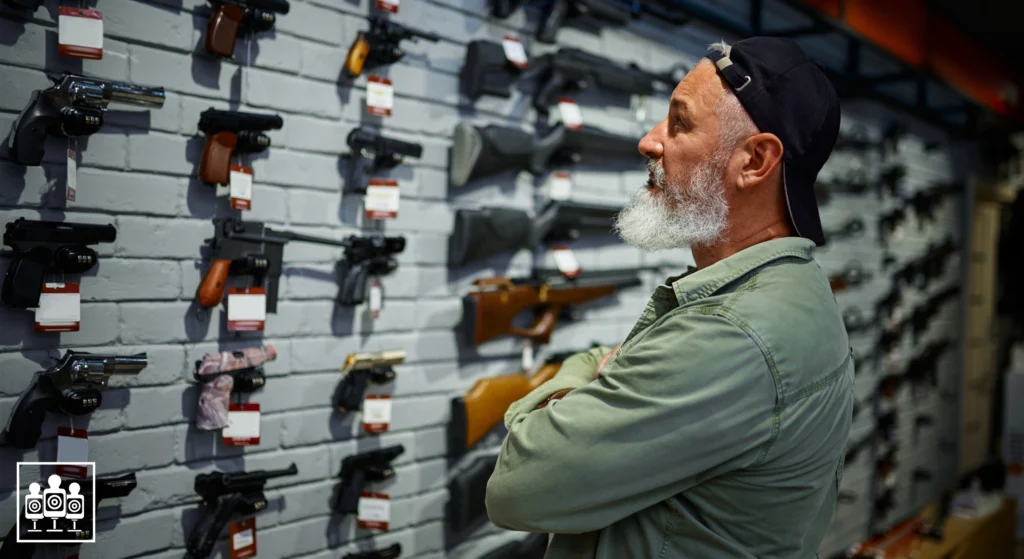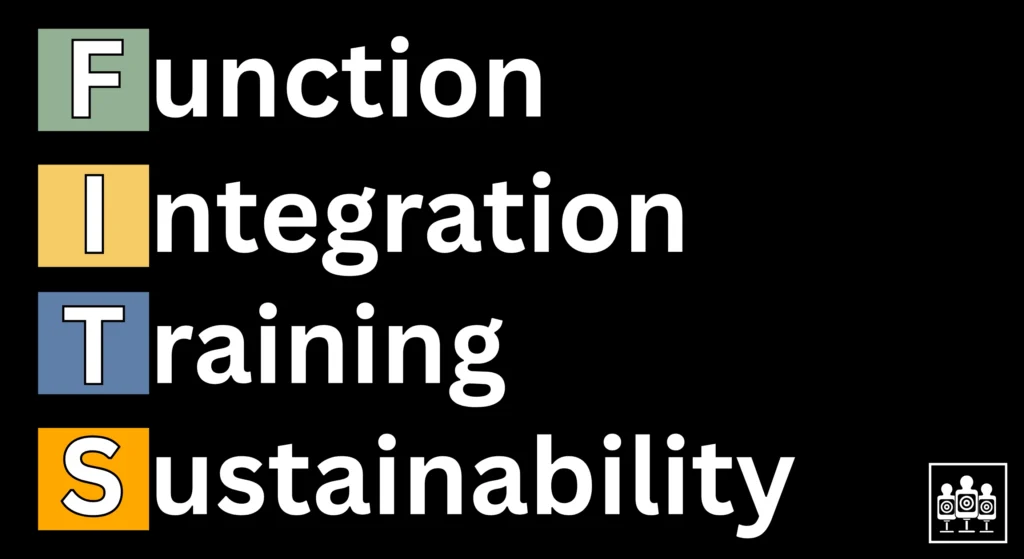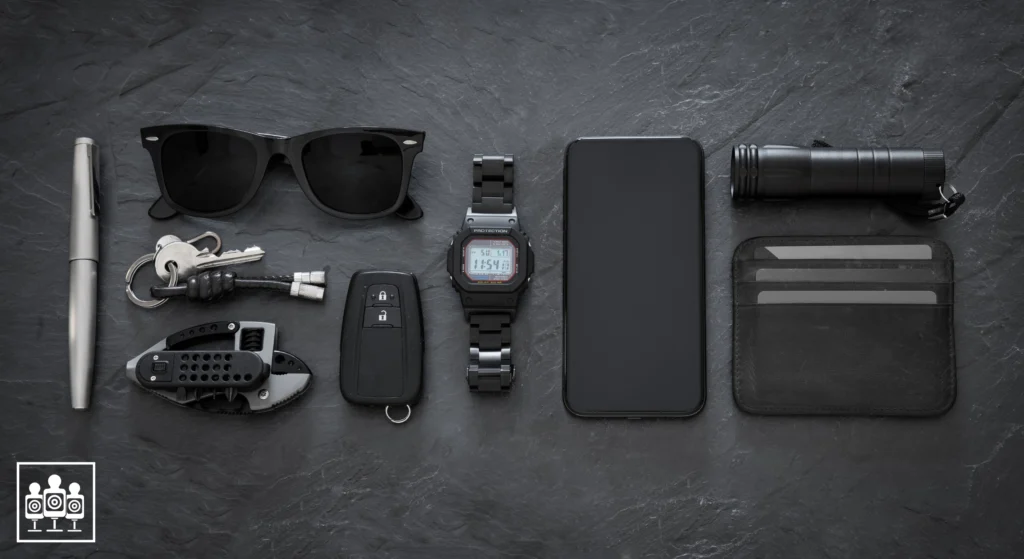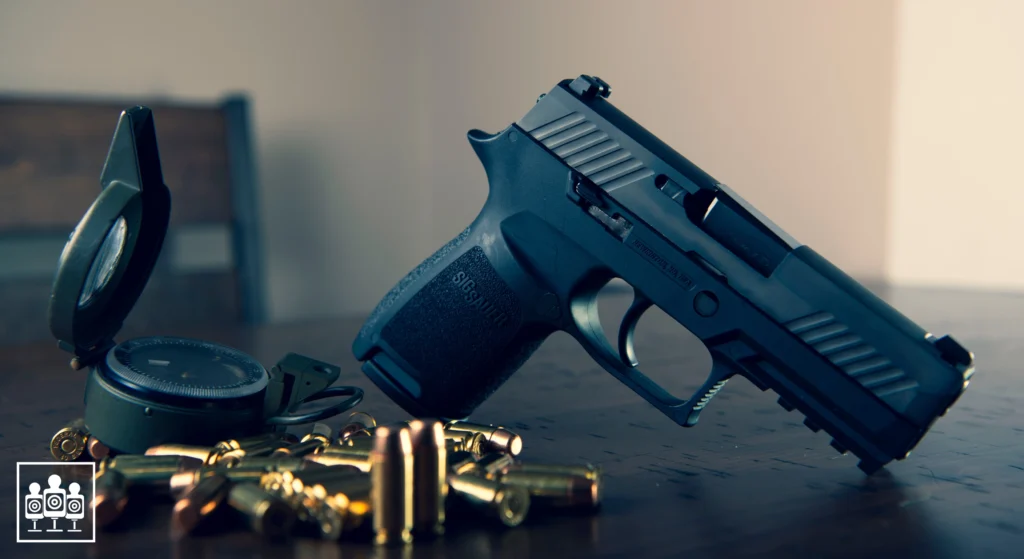If you’ve ever stood at a gun counter staring at two pistols and felt your brain lock up, you’re not alone. Do I go with the one that feels good in the hand? The one the guy at the shop swears by? Or the one with a thousand YouTube reviews and fanboys arguing in the comments?
Second-guessing is part of the process, but it doesn’t have to paralyze you. I’ve seen too many shooters — from rookies to seasoned folks — waste months overthinking and then still end up with something that doesn’t fit their life.
That’s why I use the F.I.T.S. Framework. It’s a simple, repeatable way to cut through the noise and pick a pistol you’ll actually carry with confidence. And since most of my content is everyday carry focused, we’ll run this framework through that lens.
Audience Misconceptions — Why Most Buyers Stay Stuck
- “There’s one perfect pistol.” Wrong. There are better fits for different people and roles.
- “Specs tell the whole story.” On paper, a 15-round magazine sounds awesome. In reality, the grip might print so badly you look like you’re smuggling a brick.
- “I’ll just wait for the next model.” That’s like refusing to buy shoes because Nike might drop a new colorway next month.

The F.I.T.S. Framework for Choosing a Pistol
F — Function (What’s the job?)
Before you even touch a pistol, ask what role it needs to fill. Are you carrying it inside the waistband every day, leaving it in a quick-access safe at home, or using it as a range trainer? Everyday carry demands concealability, quick handling, and reliability under stress. Home defense allows for something a little larger and heavier.
I — Integration (How does it fit your system?)
Your gun doesn’t live in a vacuum. It has to work with your body type, wardrobe, holster, belt, and the rest of your EDC gear. If it’s too bulky, you’ll leave it at home. If it doesn’t play nice with your setup, you’ll end up frustrated.
T — Training (Can you actually run it under stress?)
Anyone can make a pistol look good in slow fire at seven yards. The real test is running reloads, shooting pairs under a timer, or doing shoot-don’t-shoot drills. If you can’t test in person, dig into reviews from people who push the gun in realistic scenarios.
S — Sustainability (Will you keep using it?)
Ask if the pistol will still serve you a year from now. Can you find affordable ammo for it? Are spare mags reliable? Does it support optics or upgrades that might matter later? If it’s a dead-end platform, you’ll regret it when you’re ready to grow.

Applying the Framework — Springfield XD vs Equalizer
When I ran the Springfield XD Subcompact and Smith & Wesson Equalizer through the F.I.T.S. filter, here’s how they shook out:
- Function: The Equalizer was better for concealment. The XD, especially with the 16-round mag extension, felt more at home in a range or home-defense role.
- Integration: Equalizer slid right into a minimalist EDC setup. The XD felt like cramming a compact/full-size hybrid into everyday clothes.
- Training: In my shoot-don’t-shoot drills, the XD gave smoother follow-up shots, while the Equalizer was quicker to reload but snappier in recoil.
- Sustainability: The Equalizer edges out here with its optic-ready slide and modern aftermarket support. My 80-year-old father even swapped the rear sight himself to mount a Holosight — no gunsmith needed.
The takeaway? Both are solid, but the Equalizer checks more boxes for the average everyday carrier.

Pros and Cons of Using a Framework
| Approach | Pros | Cons |
| F.I.T.S. Framework | Clear, repeatable, no regrets | Takes a little discipline |
| Impulse Buying | Quick, fun, instant gratification | Regret, wasted money, poor fit |
Practical EDC Context — Beyond the Gun
Even the perfect pistol won’t save you if the rest of your kit is a mess. That’s where a lot of people fail: great gun, junk-drawer EDC. If you’re carrying mismatched gear with no system, you’re just creating new problems.
That’s why next week we’re tackling The EDC Junk Drawer Problem. Because your firearm should be part of a clean, reliable system, not the only star of the show.

Conclusion
The F.I.T.S. Framework makes pistol selection simple:
- Define the Function.
- Check Integration with your life and gear.
- Make sure you can handle it in Training.
- Confirm it’s Sustainable long-term.
Do that, and you won’t be stuck second-guessing yourself or chasing the next shiny release.
Want to see the framework applied in action? Watch my Week 1 video on the Springfield XD vs S&W Equalizer to see which one came out on top in real drills. Then follow along for next week’s breakdown on fixing your EDC junk drawer.
👉 For more frameworks, drills, and guides, visit our YouTube channel
